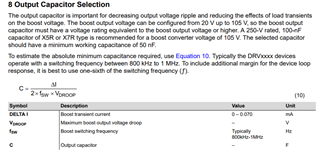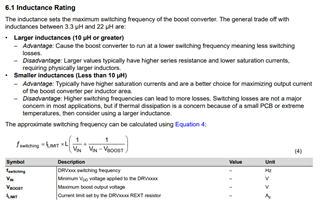Other Parts Discussed in Thread: DRV8662
Tool/software:
Hello,
I would like to drive a 360nF Piezo between 0 and 100V, and the DRV2700 seems to be an adequate solution. I just had a few questions about its operation.
- I wonder what happens if I want to drive the piezo at 1kHz. Will the driver be able to provide enough current or will its output be distorted?
- The driver's DS indicates a GBW product of 550kHz for the amplifier. Does this means the driver cannot exceed 10kHz with a 34.8dB gain ? What happens to the output in this case ?
- I could only find information about the switching frequency in the configuration guide, but, if I'm not mistaken, the equation and the 1MHz value given in the guide don't fit. (see screenshots)
Thank you in advance for your help !
Regards,
Gaël



